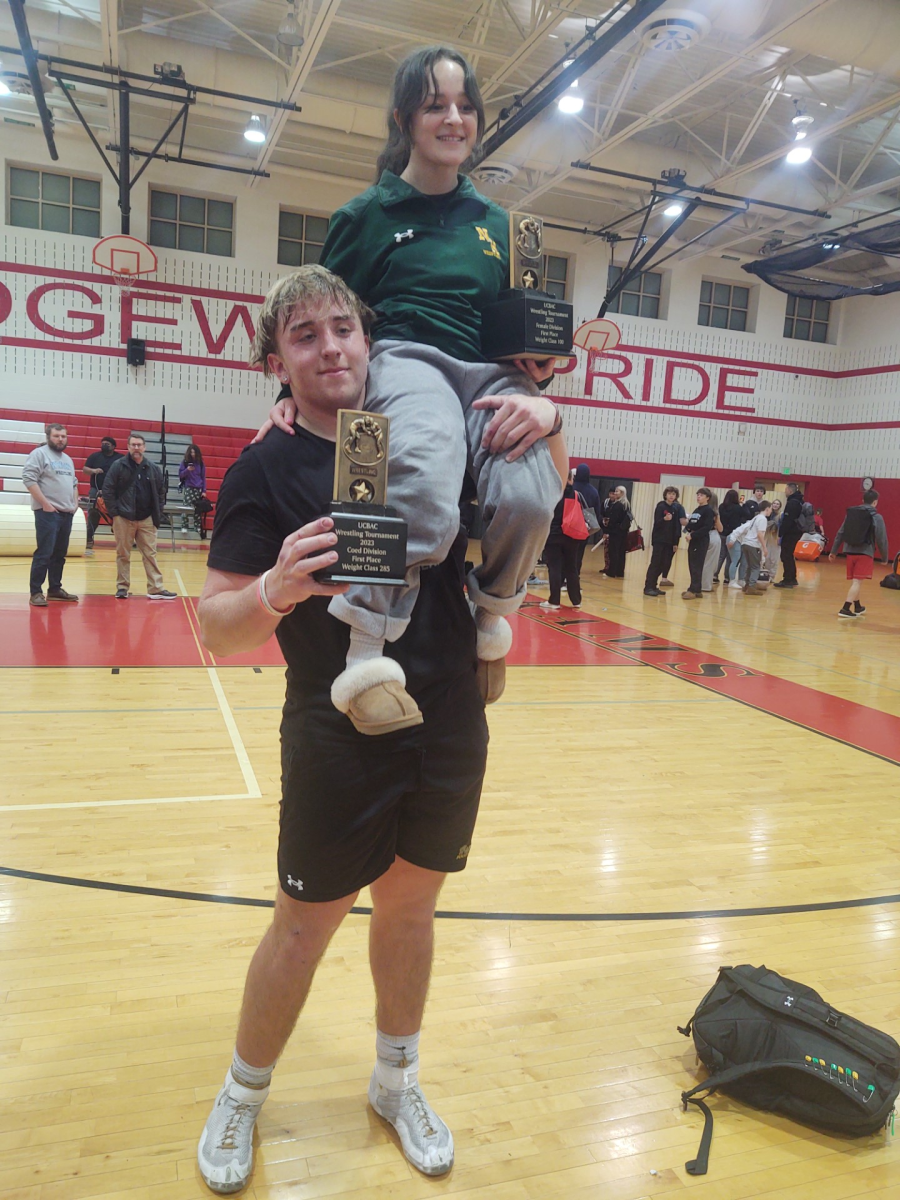Food for America continues for over 30 years; Students learning where food comes from
Second graders walking towards their first station during the Food for America event. Students had a positive experience learning about where their food came from.
October 27, 2022
“So many people do not understand where their food comes from, so this is showing the students firsthand,” says animal science teacher Mrs. Aimee Densmore. “Food for America is an event where second grade students from across Harford County are invited to come to our school farm to learn about all aspects of agriculture.” Students will take a tour around the school with the objective to learn where their food comes from.
Densmore explains that this fall, there will be several schools attending the event, “Norrisville Elementary, Homestead Wakefield, Riverside, North Bend, Emmorton, and Fountain Green. This Spring we will have Ring Factory, Church Creek, Bel Air, Forest Hill, North Harford, Bakerfield, William S. James, Churchville, and Jarrettsville.”
The event took place on Oct. 18 and Oct. 19 and each tour lasted approximately 90 minutes, says Densmore. “The students visit approximately 20 stations around the school farm and aquaculture lab.” Food for America has been around for 30 years, and according to Densmore, “many of the students (and adults that chaperone) have never gotten to see a farm animal up close, things we take for granted.”
Junior Cole Hellwig presented information at a station during the event. “I like giving information to the youth, not everyone knows where their food comes from and it is important to understand [that] aspect of agriculture,” he says. He explains that many children come into Food for America thinking that their food is simply coming from supermarkets and that learning the specific ways food makes it to their tables changes that belief.
“The students go station by station learning about different subjects such as the animals in the barns, but it isn’t just information, we play games with them too.” Hellwig ran a game of Simon Says during the event. “We prepare by understanding what we are presenting,” says Hellwig, “I did this last year and it went really well. Reading isn’t going as well as we thought it would, kids seem to understand better with hands-on activities instead of listening to [the] information being given.” He also mentions that Densmore is the leader of this event and that she is the reason that things run smoothly. “She does it all,” adds Hellwig.
“What I talk[ed] about here is the tilapia in the tanks [in the aquaculture lab] and how different fisheries grow tilapia to be used for food,” says sophomore Jacob Jestel, who presented during the event. In addition to Jestel and Hellwig, junior Katrina Winkler took part in the event. “We have the leaf rubbing station, we have collected leaves and we show the kids how to trace it,” says Winkler. “We flip the leaf upside down, put it under the paper, and have them run a crayon over it.” She explains that her station is mainly for fun and that the entire event is focused on environmental elements and that this nature fun is beneficial for the kids.
A teacher from Homestead Wakefield, Mrs. Nicole Fannin, chaperoned a group of second graders during the event. “The first station the students went to was the seed planting station, and they’re currently doing the leaf prints. They seem super excited for the tour,” says Fannin. She adds that the kids were really looking forward to learning specifically about the farm animals and that they had a lot of fun. “They were asking a lot about the cows and the horses before we came here today,” adds Fannin.






